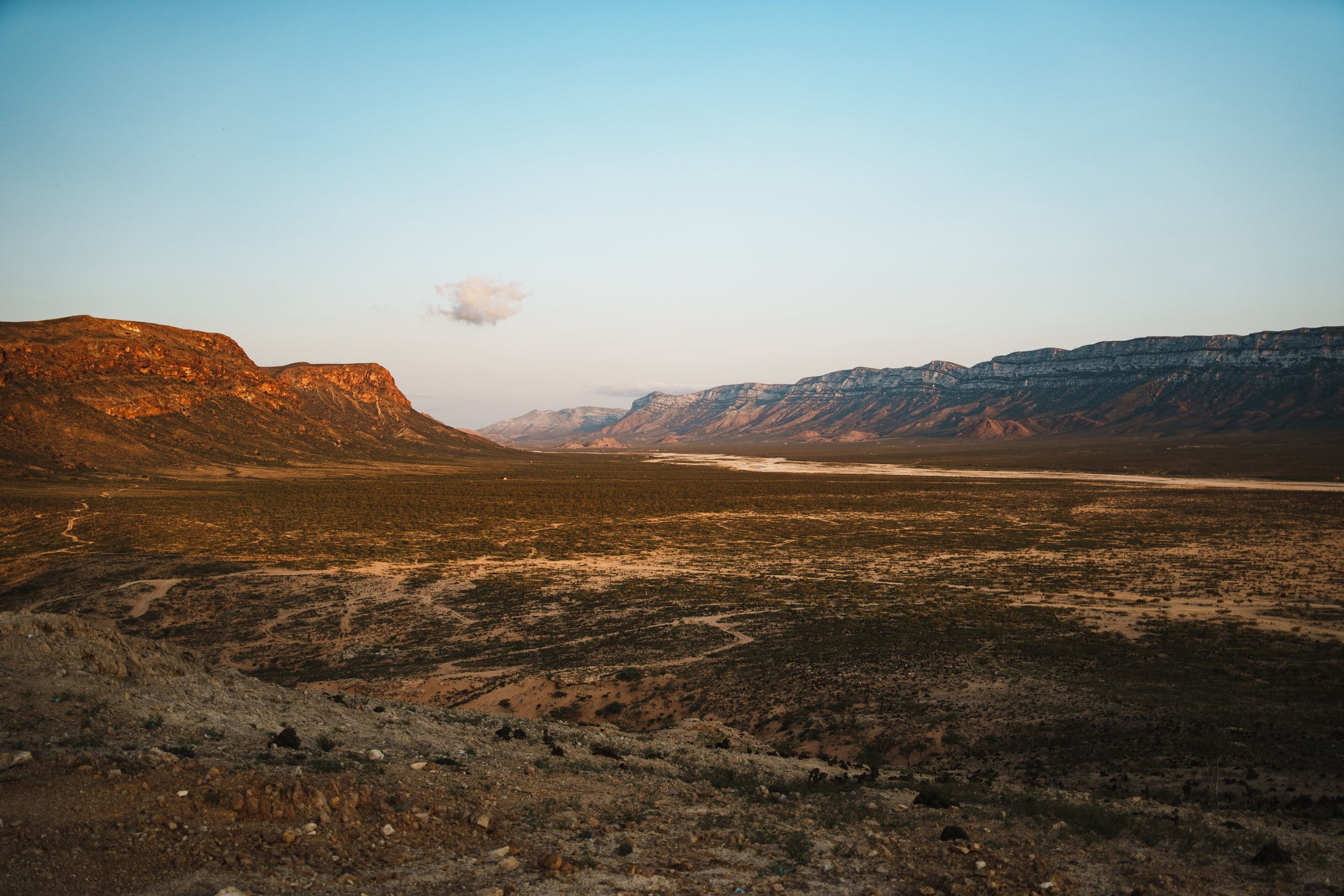
A JOURNEY TO THE MYSTERY LAND
Socotra is one of the most isolated landforms on Earth of continental oriain, The archipelago was once part of the supercontinent of Gondwana and detached during the Miocene epoch, in the same set of rifting events that opened the Gulf of Aden to its northwest.
The island of Socotra lies 380 kilometres south of the Arabian Peninsula and 240 kilometres east of Somalia. The island is isolated and home to a high number of endemic species. Up to a third of its plant life is endemic. lt has been described as "the most alien-looking place on Earth". In 2008, Socotra was recognised as a UNESCO World Heritage Site.
Birds
Socotra’s birds are of many types, so they constitute one of the features of the environment of diversity in nature, and watching the types of birds is not difficult, as they fly near the visitor, above the trees, in the sea waters surrounding the island, and in the valleys, and the visitor hears their beautiful and diverse voices wherever he moves. There is a type of bird that comes near the visitor. If he decides to rest somewhere, eat food, and throw away his waste, it quickly devours that waste. Therefore, the people call this type of bird “the cleaner” or “the municipality,” and by the Socotri name for it, it is called Sa’idah. It is believed that there are (105) species of birds on the island, and (30 species) of them breed on the island. The island also contains a high percentage of endemic birds. The Bird Protection Society in Yemen is working to accelerate the conduct of studies and survey coverage of the island to facilitate the development of maps on the distribution of birds and their breeding sites in relation to their natural environments. It is also working to identify more important sites for birds on the island in order to protect them.
Caves
Many caves and mountain caves are spread in many locations on the island of Socotra and its affiliated islands. These caves were formed as a result of natural erosion factors. In some of them, “geological” factors interacted, as the water dissolved the lime and formed lime columns hanging from the top of the cave surfaces, in addition to Limestone columns rise from the bottom of the caves to the top. Most of these caves and caves are inhabited, and they carry out their usual normal lives. The most important of them in general is the “De Jeb” cave in the Nojd plain, which is considered the largest in size and can accommodate a number of families. The car carrying visitors can also reach it. The interior of the cave and moving in and out without difficulty. De Jeb Cave is 75 kilometers away from the center of Hadibo. There is another misconception that many people have, especially those who do not know Socotra and the nature of its people. It is said that caves are one of the habitation patterns for Socotra humans. The truth is that there are some people who search for grass for their livestock, especially cows and sheep, in times of drought, or in which their sheep and cows groan during periods of rain. Heavy rains and they live in these caves for temporary periods only depending on the period of drought, after which they return to their original residence, i.e. their regions or villages. It is also noted that the shepherds from Socotra use the caves for the same previous purpose.
Beaches
The island's beaches extend over a distance of 300 miles and have uniquecharacteristics in terms of their pure white sand dunes, which appear to the visitor likepiles of cotton crops, most of which are shaded by palm trees. It overlooks the sea waterfree of pollution factors, where you can see fish species swimming in it, and all of them are ideal sites for recreation and diving after the availability of infrastructure services on the island and the preparation of these beaches with tourist services. The beach waters also contain many rare aquatic organisms, including turtles of various shapes, such as the large green turtle. the size. In addition to the coral reefs and pearls that Socotra Island has been famous for since ancient historical times.
Waterfalls
On the island of Socotra, there are a number of abundant waterfalls spread in various locations, the most important of which is the “Danghan” Falls in Hadibu, which is only 6 km away from the center, as well as the Halah, Mumi, Qa’ra and Ayhaft Falls, and most of these waterfalls originate from the tops of the mountains throughout the year.




